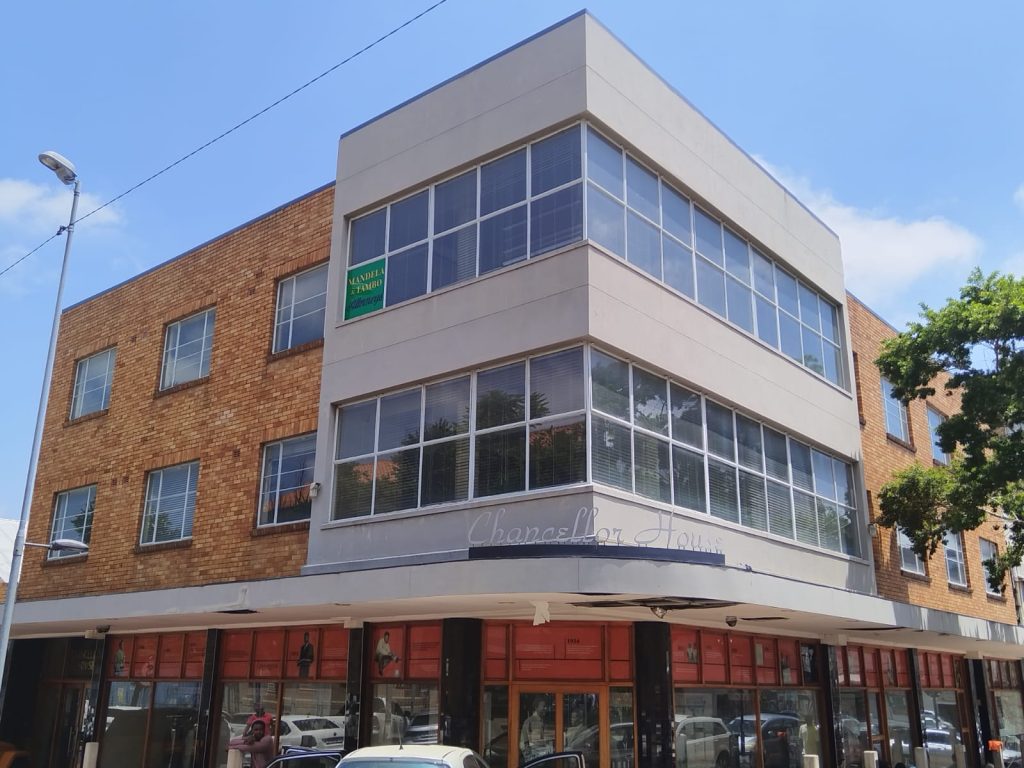St Peter’s Priory (St Martins School) was built in 1911, designed by architect Frank Fleming, who was also responsible for the Christ the King Anglican Church in Sophiatown. There are striking similarities between the two Communities of the Resurrection churches. Both are solid brick buildings, lined inside with rows of white arches running towards simple altars. St Peter’s retains its triangular wooden beams in the ceiling, and although there are no windows above the altar, on the opposite end the wall is filled with seven beautiful arched, stained-glass windows. Another row of windows runs high along both sides of the church. These were all plain glass until 1989, after which departing matrics donated stained-glass windows to replace them. They were made by Lynette Naude, the daughter-in-law of anti-apartheid cleric Beyers Naude. The site and buildings is well preserved with buildings under constant maintenance and great care is taken to preserve the integrity of the buildings and the site.
St Martin’s School traces its origins back to the foundation of St Agnes School for the training of domestic helpers in 1908. With female British imperial support in the newly conquered Transvaal, Anglican women missionaries opened St Agnes' School for African girls in Rosettenville, Johannesburg, in 1909. To secure state funding, marketable domestic or 'industrial' skills were highlighted; though creating Christian homes was always an allied objective. The contrasting educational priorities of the pioneers, as compared with a teacher hired in the 1920s, help uncover the changing pressures on mission schooling both from the state and the growing body of converts. With their own, often alternative, agendas, black Christian parents and daughters helped to 're-domesticate' missionary ideas of domesticity after the First World War, bringing such female skills back into the black home, rather than seeing 'their' girls in servant jobs for whites (St Peters Magazine:1934). Academic aspirations grew, making 'domestic science' optional, not obligatory. Meanwhile, to counter the secularizing threat posed by the white settler government's vital financial backing and bureaucratic regulation of schools, missions supplemented their formal educative influence with a wide network of Sunday Schools and religiously-based ecumenical youth movements (ibid). The Christianized leisure pursuits, useful skills and leadership training of Wayfarers envisaged a wider future for African girls than just the domestic skills and service held out earlier in the century, as graduates contributed to building up and sustaining black urban Christian communities in inter-war South Africa.
A few years later in 1911, the Community Resurrection Brothers founded St Peter’s Priory and College, offering a boarding-based high school education to the young men who came from the length and breadth of South Africa. The brethren were mainly known to be Christian Socialists who were challenged to respond to the poverty of the working classes. It soon became known as the “Black Eton” where academic achievements were espoused. The list of the early alumni is impressive, the likes of Oliver Tambo, David Webster, Alec Erwin and later Fikile Bam and Hugh Masekela, as well as many of the former students who hold key positions in government and in large international corporations. Oliver Tambo joined the school as a student in 1938 and later in 1942 he returned as a Maths and Science teacher (Harrison, 2004:52). During the same time Father Trevor Huddleston was sent to Rosettenville St Priory’s as a superintendent and Priest-In-Charge of the Anglican CR Mission in Orlando and Rosettenville. Father Huddleston quickly became known for his anti-apartheid stance and became involved with protests against forced removals in Sophiatown along with other struggle heroes (ibid: 53). He developed strong relationships with Oliver Tambo and Nelson Mandela and made a strong stance against the Bantu Education System which placed him in constant conflict with the authorities, in 1953 rather than subscribe to the restrictions of the Bantu Education Act he closed down the school. It was later reopened as a white only school in 1963 but under secular management. The school continues to operate under the same premises but is now of course again a non-racial school.
General Protection: Section 34(1) Structures under the National Heritage Resources Act, 1999

A culmination of research gathered over many years, the Online Johannesburg Heritage Register is being launched on Nelson Mandela Day 18 July 2025.
Among the many heritage sites featured is Chancellor House, the downtown offices of Mandela and Tambo Attorneys in the 1950s. After having been vacant and shuttered for more than a decade, this iconic building is being revived and brought to life once again as offices for the Community Development Department, which oversees the City’s Arts, Culture & Heritage Services.